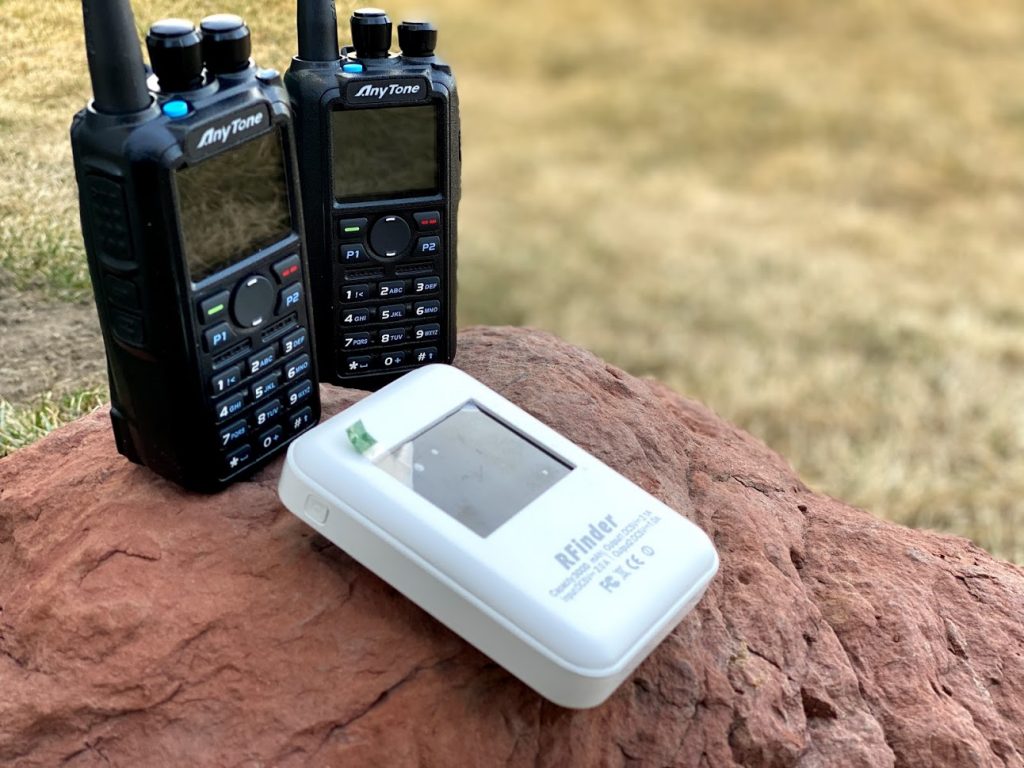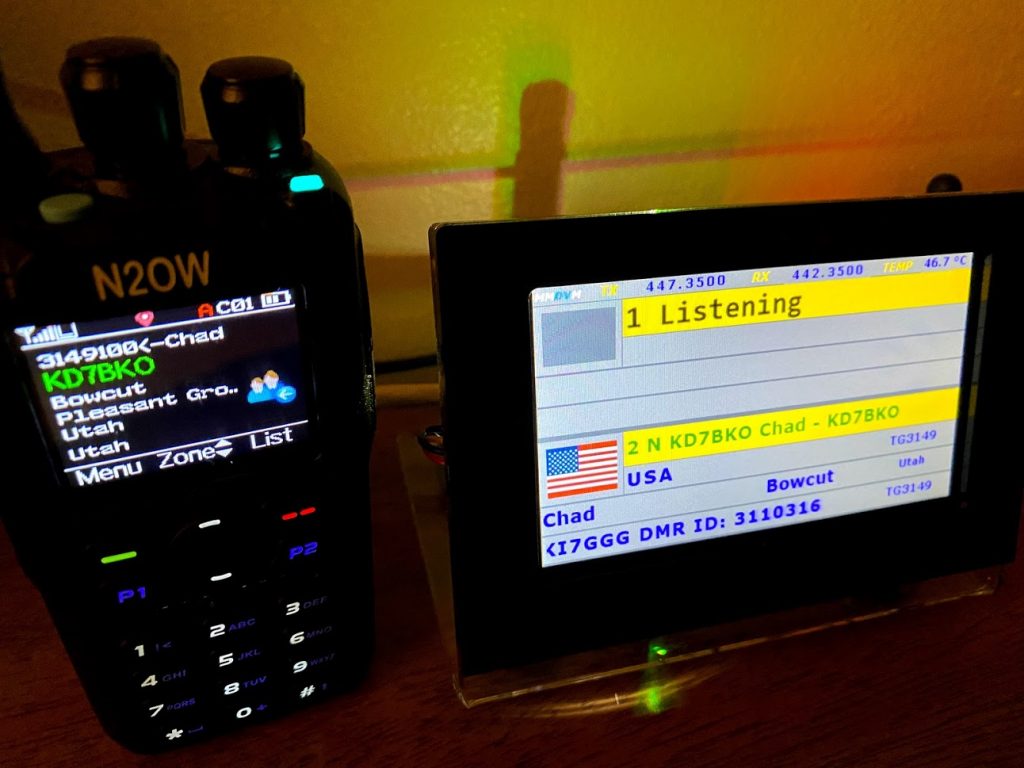
Is Digital Mobile Radio (DMR) just hams talking over the internet? Does everyone sound like a robot? Why is it so expensive? In this post, I’d like to share some of the top reasons KI7FUO (Tyler) and I enjoy using DMR.
DMR Is Large Scale Ham Radio
One way to think about DMR is to imagine a large pool of interlinked repeater systems. How large? That’s one of the interesting things. You have no way of really knowing. Repeaters and hotspots can be linked in to a DMR network on demand, and can be unlinked just as easily. With services like Echolink, end users or specific repeaters can create one-to-one relationships. With DMR, you can create many-to-many relationships. The list is ephemeral and is constantly changing based on the actions of the hams who actually use it. This leads to some impressive scales. On a large talkgroup you might be keying-up dozens or even hundreds of repeater systems. Your signal will be heard over thousands of square miles across the United States and around the globe.
DMR Is International
The DMR phenomenon is truly an international one. You’ll have no trouble meeting hams all over the world. No, it isn’t quite as magical as skipping HF across the ionosphere. Nothing can replace the feeling of making a direct RF link with a coveted DXpedition from your home QTH. The international contacts you’ll make on DMR are effortless by nature. This allows hams to form international relationships that would be difficult with other modes. You can have a QSO with that ham in Australia every day at noon, for example, and invite someone from China to join the conversation. All with ease. This creates a sense of community unlike what you’ll find with other linked repeater services.
DMR Talkgroups
DMR networks route traffic based on identifiers called “talkgroups.” You pull up a specific talk group, ker-chunk the repeater, and you’re now connected. There are hundreds of talkgroups (TGs) to choose from that help to categorize QSOs in meaningful ways. There is a talkgroup for Utah (3149), USA Wide (3100), and the grandaddy of them all World-Wide (91). Beyond regional groups there are specific TGs for ATV Talk (9410), RVing Hams (31652), SOTA (973) and more. This opens up a way for you to find like-minded people to have a QSO with in an easy and effortless way. Most DMR repeaters permit the linking of any of these TGs, and all the sudden that conversation is on the air.
Hotspots Are Hot

As you build relationships with fellow hams across the DMR system, you’ll want to stay in touch. A hotspot allows you to take the repeater with you. Yes, it needs an internet connection (just like practically all linked repeaters do). For most hams, getting plugged in to the internet isn’t the problem. It is finding people to talk to, and that’s really what DMR is all about. It is where the hams are. With your hotspot you can tap in to that network of fellow hams from a variety of places.
As the DMR network grows more wide-area repeaters are becoming available. There are over 5000 repeaters on the BrandMeister DMR network right now. With each new wide-area repeater that goes up, it makes connecting to DMR out in the sticks easier to accomplish. By supporting DMR you are helping to build that network. Two hams can use a repeater at once (on the same frequency), doubling the fun.
Conclusion
DMR has so much to offer hams. We hope this post has given you a few things to think about. Thanks for reading!
73 de N2OW, Ryan